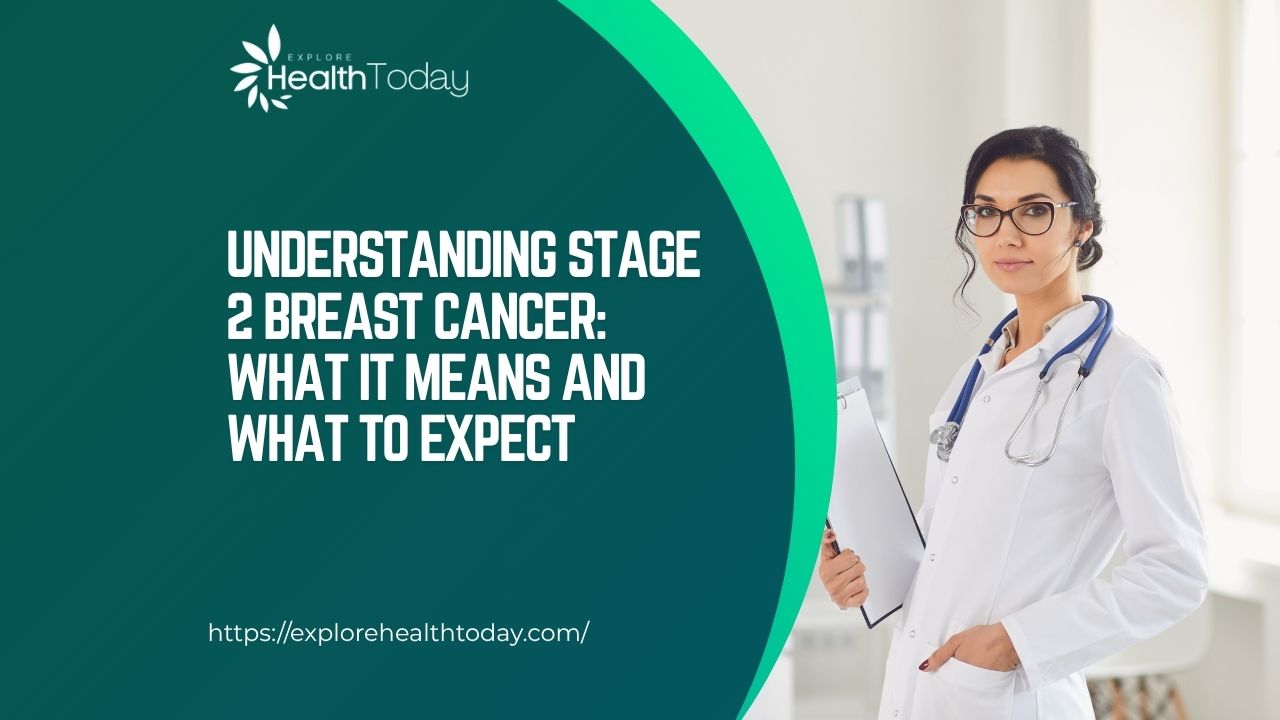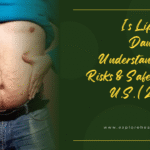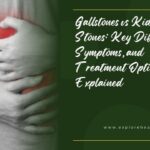When you hear the words “stage 2 breast cancer,” a wave of questions and emotions can follow. What does it mean? How serious is it? What are the treatment options? And most importantly—what comes next?
Stage 2 breast cancer is considered early-stage but invasive, meaning cancer cells have spread beyond the original tumor site but not to distant parts of the body. The good news? With early diagnosis and modern treatment approaches, many people go on to live long, healthy lives.
In this comprehensive guide, we’ll break down everything you need to know about stage 2 breast cancer—from diagnosis to treatment to life after recovery.
What Is Stage 2 Breast Cancer?
Breast cancer is categorized into stages based on how far the cancer has spread. Stage 2 is divided into two subcategories—2A and 2B—depending on tumor size and whether nearby lymph nodes are involved.
A:
- The tumor is 2 cm or smaller and has spread to 1–3 nearby lymph nodes, or
- The tumor is 2–5 cm but hasn’t spread to lymph nodes
B:
- The tumor is 2–5 cm and has spread to 1–3 lymph nodes, or
- The tumor is larger than 5 cm but has not spread to any lymph nodes
At this stage, the cancer is still localized or regional, meaning it hasn’t metastasized (spread to distant organs). This makes treatment options more effective, and the overall prognosis is generally favorable.
How Is Stage 2 Breast Cancer Diagnosed?
Diagnosis involves a combination of imaging, biopsy, and lab testing. Here’s what typically happens:
- Mammogram and ultrasound: To detect tumor size and shape
- Biopsy: Confirms cancer type and hormone receptor status (ER, PR, HER2)
- Lymph node biopsy: Checks if cancer has spread to nearby nodes
- MRI or PET/CT scans (if needed): Helps evaluate the extent of disease
Many women are diagnosed during routine screenings. According to the CDC’s National Breast and Cervical Cancer Early Detection Program, screening mammograms are critical for early detection, especially for women over 40.
Symptoms of Stage 2 Breast Cancer
In many cases, stage 2 breast cancer may not cause noticeable symptoms, especially if found during routine screening. However, some signs may include:
- A lump in the breast or underarm
- Breast swelling or changes in shape
- Dimpling or puckering of the skin
- Nipple discharge (not breast milk)
- Pain in the breast or nipple area
- Skin that appears red, scaly, or inflamed
If you notice any of these signs, see a healthcare provider promptly.
Treatment Options for Stage 2 Breast Cancer
Treatment plans for stage 2 breast cancer are personalized based on tumor biology, hormone receptor status, age, and general health.
1. Surgery
- Lumpectomy: Removes the tumor and a margin of surrounding tissue
- Mastectomy: Removes the entire breast; may be chosen based on tumor size or personal preference
- Sentinel lymph node biopsy or axillary node dissection: Checks for cancer spread to lymph nodes
2. Radiation Therapy
Often recommended after lumpectomy to kill any remaining cancer cells and reduce recurrence risk. Sometimes used after mastectomy, especially if lymph nodes are involved.
3. Chemotherapy
Chemotherapy is commonly recommended if:
- Lymph nodes are involved
- The tumor is large
- The cancer is triple-negative (lacks estrogen, progesterone, and HER2 receptors)
4. Hormone Therapy
For hormone receptor-positive cancers (ER+ and/or PR+), medications like:
- Tamoxifen
- Aromatase inhibitors
help block hormones that fuel cancer growth.
5. Targeted Therapy
If the tumor is HER2-positive, medications like Herceptin (trastuzumab) are used to specifically target HER2 proteins and stop cancer growth.
Learn more about treatment standards from the National Cancer Institute.
Prognosis and Survival Rates
The prognosis for stage 2 breast cancer has improved significantly in recent years, thanks to advancements in screening and treatment.
According to the American Cancer Society’s 2025 outlook, the 5-year relative survival rate for stage 2 breast cancer in the U.S. is:
- 93% for stage 2A
- 88% for stage 2B
These numbers reflect survival relative to people without cancer and may vary based on age, health, and tumor biology.
Life After Diagnosis
Being diagnosed with stage 2 breast cancer can feel overwhelming—but you are not alone. Over 4 million breast cancer survivors are living in the U.S. today, and support has never been stronger.
Tips for Coping and Recovery
- Build a support system—friends, family, support groups
- Stay active, if possible—exercise helps reduce fatigue and boosts mood
- Eat a balanced diet rich in fruits, vegetables, lean protein, and whole grains
- Speak with a mental health professional if you’re feeling anxious or depressed
- Know your rights at work—the Americans with Disabilities Act (ADA) protects employees undergoing treatment
Stage 2 Breast Cancer and the U.S. Landscape (2024–2025)
In 2024, breast cancer continues to be the most common cancer among women in the United States. Efforts to improve health equity are ongoing, particularly among underserved populations.
Some notable trends include:
- Increased access to genetic testing for BRCA mutations, helping tailor treatments
- Expanded insurance coverage for breast reconstruction under the Women’s Health and Cancer Rights Act
- More young women under 45 being diagnosed, prompting updates to screening guidelines
The U.S. Preventive Services Task Force now recommends women begin mammograms at age 40 (down from age 50), a shift expected to catch more stage 1 and 2 cases early.
FAQs About Stage 2 Breast Cancer
Can stage 2 breast cancer be cured?
Many people with stage 2 breast cancer are treated successfully and never experience recurrence. While the term “cure” isn’t often used in oncology, long-term remission is very possible.
Is chemotherapy always required?
Not always. If your cancer is hormone receptor-positive and lymph node-negative, chemo may not be necessary. Genomic tests like Oncotype DX help guide this decision.
How long is treatment for stage 2 breast cancer?
It varies. Surgery plus radiation may take a few months; adding chemotherapy and hormone therapy can extend treatment to a year or more.
Final Thoughts
Stage 2 breast cancer is treatable and, in many cases, highly manageable. While hearing the word “cancer” can be life-altering, knowing what you’re dealing with is the first step toward taking control. From surgery to survivorship, there are effective options and supportive communities waiting for you.
If you or a loved one has been diagnosed with stage 2 breast cancer, take the time to understand your options. Speak with your oncologist, seek a second opinion if needed, and surround yourself with support. Knowledge is power—and you don’t have to face this journey alone.
About ExploreHealthToday.com
ExploreHealthToday.com was created to be a one-stop resource where readers can find up-to-date, well-researched articles on a variety of health topics. From nutrition and wellness to lifestyle and mental health, we strive to provide reliable information to help you make informed decisions about your well-being.
We believe that good health starts with good information, and our mission is to empower our readers with knowledge they can trust.
Visit us at ExploreHealthToday.com to learn more.





